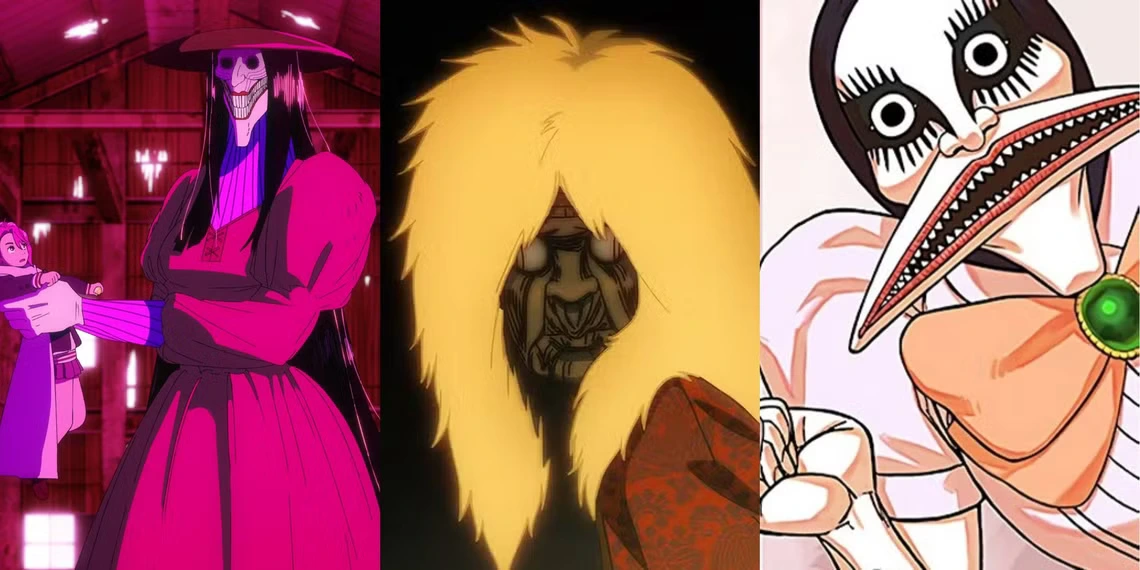Dandadan is an amazing manga that explores the clash between yokai/spirits and extraterrestrial beings, with humanity caught in the crossfire. The series, crafted by the talented Yukinobu Tatsu, features a variety of supernatural characters who interact with Okarun, Momo, and their companions, all of whom are inspired by existing folklore and fictional stories.
Be it a tale from traditional Japanese folklore or a recent urban legend, many of the strong yokai featured in Dandadan have their roots in reality. Here are some of the most captivating ones we’ve discovered.
7. Turbo Granny: Based On The Urban Legend Of The Same Name
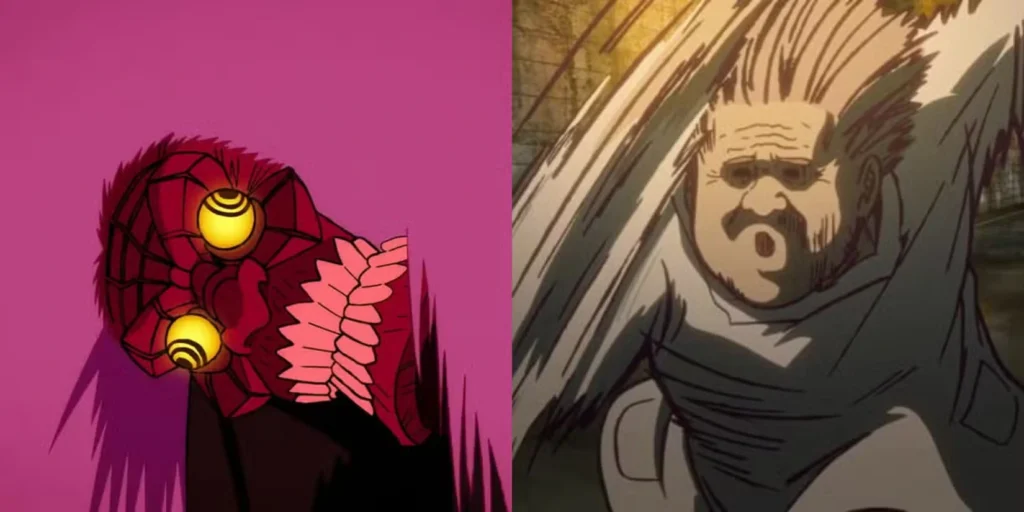
- The character makes their debut in Chapter 1 of the manga and Episode 1 of the anime.
Turbo Granny is the yokai that grants Okarun his amazing abilities and serves as the mascot for the entire Dandadan series. It’s no wonder that this legendary elderly figure, known for her astonishing speed, is inspired by a real urban legend of the same name that has been making the rounds in Japan for the past few years.
In the tale of Turbo Granny, it’s said that those driving through Hyogo Prefecture might spot a mysterious elderly woman sprinting at astonishing speeds, keeping pace with their cars. Some variations of the legend suggest that she might eventually catch up to these drivers and place a curse on them for eternity. Interestingly, Dandadan isn’t the only anime and manga to nod to this well-known urban legend; fans might recall the character Dash Granny from Season 2 of Mob Psycho 100.
6. Earthbound Spirit Crab: Based On The Myth Of The Heikegani Crabs
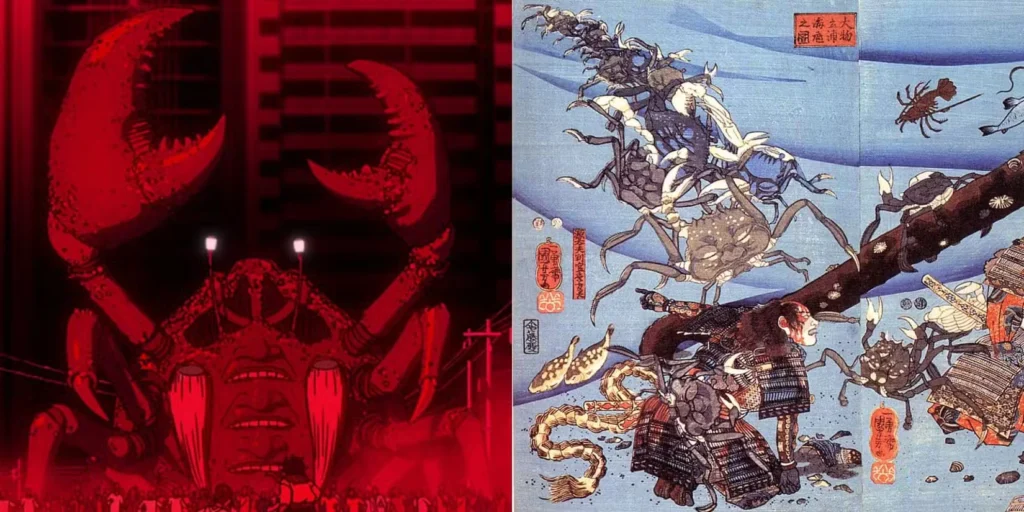
1. The character makes their debut in Chapter 5 of the manga and Episode 4 of the anime.
Turbo Granny’s key companion in her early adventures is the Earthbound Spirit Crab, a gigantic crab-like spirit that carries the souls of all the girls who lost their lives in the Shono City tunnel. This formidable yet deeply sorrowful being is inspired by one of the most intriguing legends tied to a real-world animal.
Native to Japan, the Heikegani crab is famous for its shell, which features a peculiar design that looks like a human face. The Tale of the Heike tells us that these crabs are thought to be the reincarnated souls of the Heike Warriors who died in the Battle of Dan-no-ura during the Genpei War. Meanwhile, Dandadan’s Earthbound Spirit Crab has a different, more modern, and sorrowful story.
5. Acrobatic Silky: Based On Acrobatic Sara Sara And La Llorona
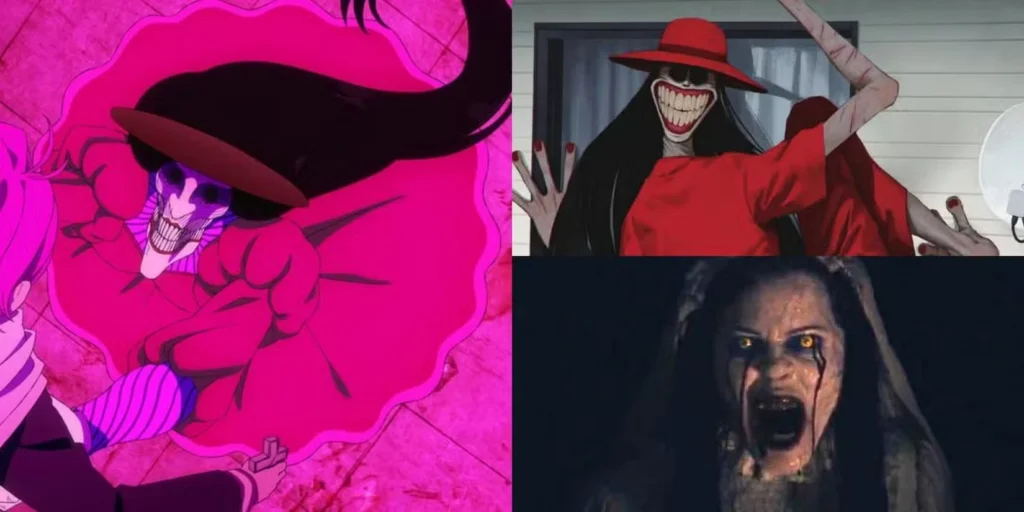
First Appearance: Chapter 13 (Manga) Episode 6 (Anime)
Not every single spirit in Dandadan is based on one single real-life myth, and Acrobatic Silky is one of the most notorious examples. The most tragic yokai in the series owes its inspiration to two similar urban legends centered on mysterious feminine creatures: The Acrobatic Sara Sara from Japan and La Llorona from Latin America.
It’s clear that Acrobatic Sara Sara was a significant influence on Acrobatic Silky, not just due to their similar names, but also because this Japanese urban legend from the early 2000s features a tall, eerie acrobatic woman with long black hair dressed in red. Additionally, when crafting Acrobatic Silky’s well-known backstory, Yukinobu Tatsu seemed to take cues from the story of La Llorona, the ghostly figure of a weeping woman eternally searching for her lost children. Some film enthusiasts might recall her as the lead character in the 2019 movie The Curse of La Llorona, which is part of The Conjuring universe.
4. Evil Eye: Based On The Curse Of The Evil Eye
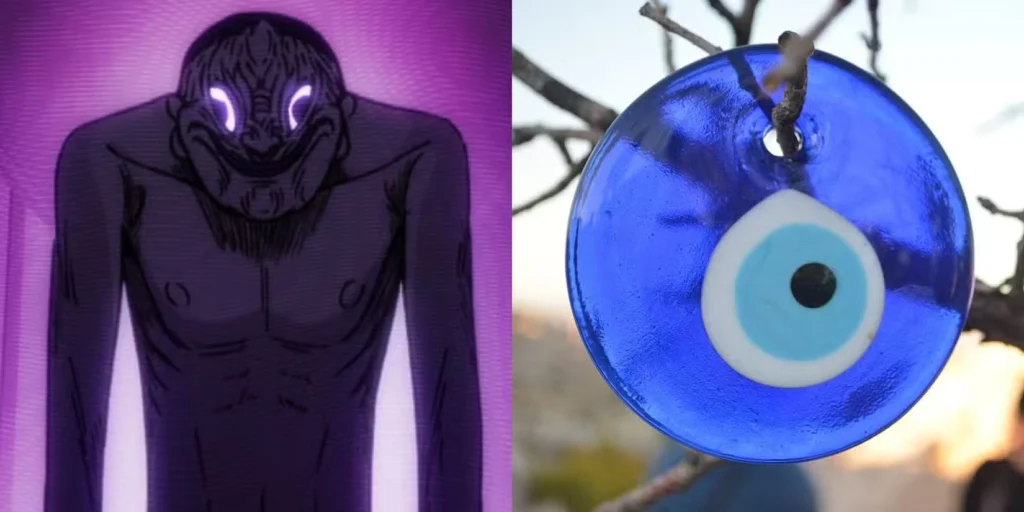
First Appearance: Chapter 28 (Manga) Episode 11 (Anime)
In the manga, shortly after the conclusion of Season 1, Jiji Enjoji becomes the host of a formidable vengeful spirit known as the Evil Eye. In his past life, he was a young boy selected by the Kito Family as a sacrifice to the Tsuchinoko. This unjust fate robbed him of a happy, ordinary childhood, filling him with envy and bitterness, especially as he longed to play outside with the other children in the town.
In reality, the Evil Eye curse is often tied to feelings of jealousy and resentment. Various cultures across the Mediterranean, Eastern Europe, Africa, Asia, Latin America, and beyond share similar beliefs that an envious stare can bring about misfortune or serious harm to someone. In Dandadan, Yukinobu Tatsu creatively personified the Evil Eye curse, transforming it into a distinct character, which proved to be quite effective.
3.Reiko Kashima: Based On The Kuchisake-onna (Or Slit-Mouthed Woman)
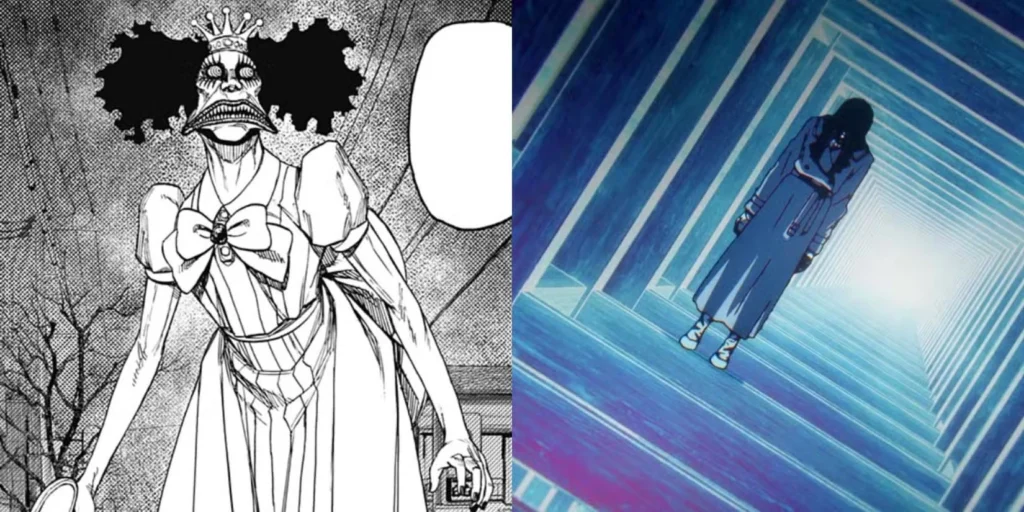
- First Appearance: Chapter 74 (Manga)
Reiko Kashima is arguably the most dangerous and terrifying evil spirit in all of Dandadan, as this vengeful woman obsessively pursued Momo Ayase for a long time and was eventually able to defeat an entire army of aliens with her mirror-based powers. Since she is also referred to as the Kuchisake-onna (Slit-Mouthed Woman) in the manga, she’s quite obviously based on the Japanese urban legend of the same name.
Without question, one of the most famous folklore stories in contemporary Japan is that of Kuchisake-onna. This haunting character has appeared in numerous anime and manga series, such as Mob Psycho 100, Jujutsu Kaisen, and even a romance manga titled Even If You Slit My Mouth. The legend tells of a malevolent spirit who hides her face behind a mask, asking her victims if she is beautiful and attacking them based on their answer. In Dandadan, her depiction stays quite true to the original legend, even if her design is a bit more whimsical, yet still undeniably creepy.
2.Onbusuman / Mai Kawabanga: Based On Two Yokai, The Konaki-jiji And The Obariyon
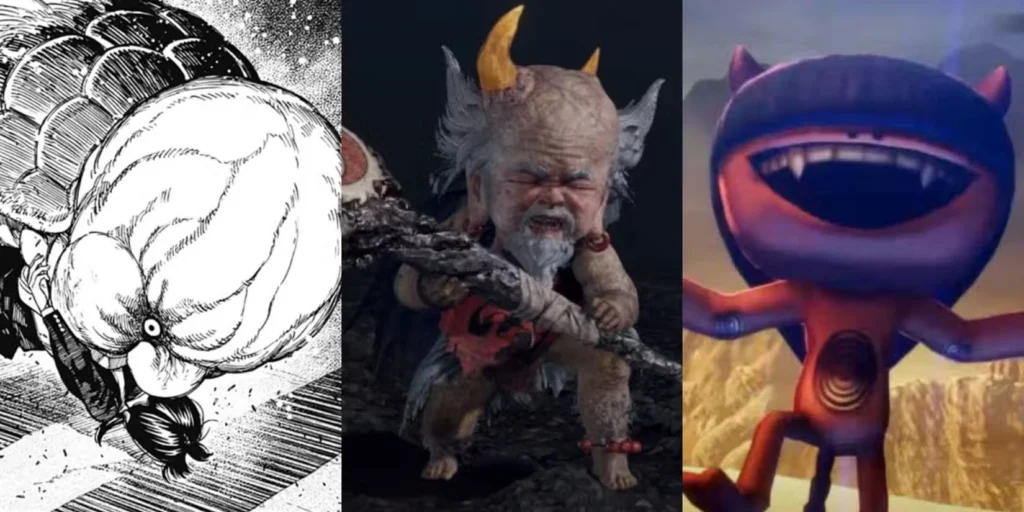
- First Appearance: Chapter 123 (Manga)
The Onbusuman, with its undeniably strange and distinctive design, isn’t rooted in a specific urban legend or yokai. Rather, it appears to be a blend of various yokai, including the Konaki-jiji. This particular Japanese yokai resembles an elderly man with a turtle shell, enticing people to lift it as if it were a baby, only to become incredibly heavy and overwhelm them. The Konaki-jiji has made notable appearances in several video games, such as Nioh 2 and Yo-Kai Watch.
The Onbusuman very clearly shares its design and some of its abilities with the Konaki-jiji, but it’s evident that another yokai, named Obariyon, also served as a main source of inspiration. This child-like entity likes to hop on people’s backs and become so incredibly heavy that they can’t walk anymore, which is very similar to the way in which the Onbusuman was affecting Rin Sawaki. Of course, the Obariyon also appeared in a few Japanese video games, mainly the Shin Megami Tensei series.
1. Umbrella Boy / Futa Zuma: Based On The Kasa-obake Yokai
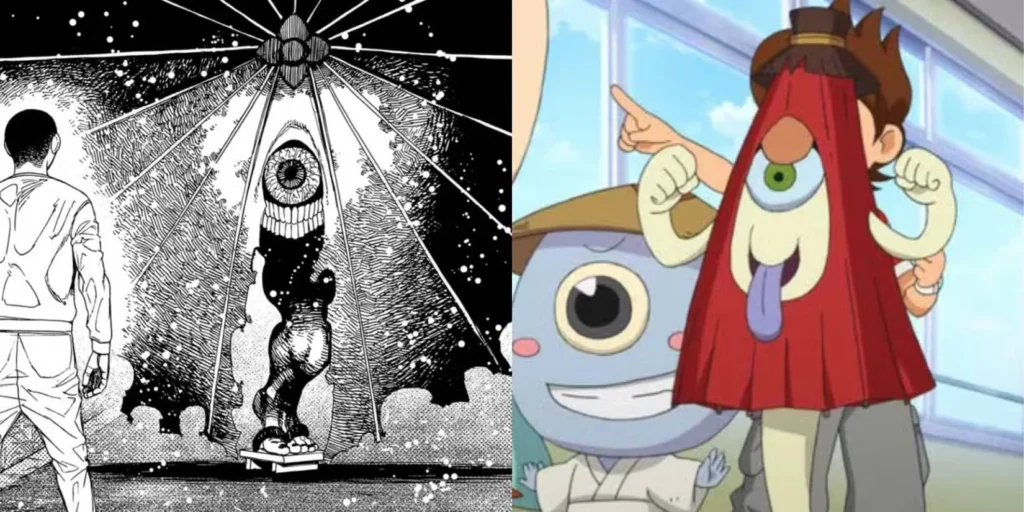
- First Appearance: Chapter 152 (Manga)
When Unji Zuma was initially presented with his unique umbrella skills, it seemed quite strange and out of the ordinary. Yet, it all clicks into place when readers discover that his spiritual powers were inherited from his late brother, Futa Zuma, who transformed into a Kasa-obake in the afterlife, a prominent figure in Japanese folklore.
In Japanese folklore, there’s a fascinating myth about old paper umbrellas that, after a while, transform into a creature known as Kasa-obake. This quirky being has one eye, one leg, and a long tongue, and is considered one of the more ordinary yet playful yokai. Kasa-obake enjoys hiding among other umbrellas to surprise unsuspecting people with a playful lick. Yukinobu Tatsu’s choice to elevate this seemingly simple creature into one of the most impressive and powerful characters in Dandadan is truly a stroke of genius.

